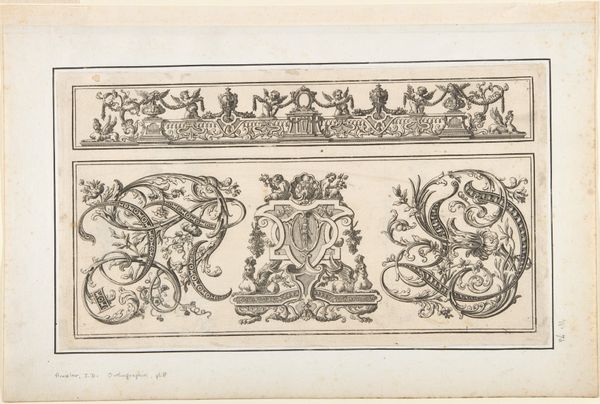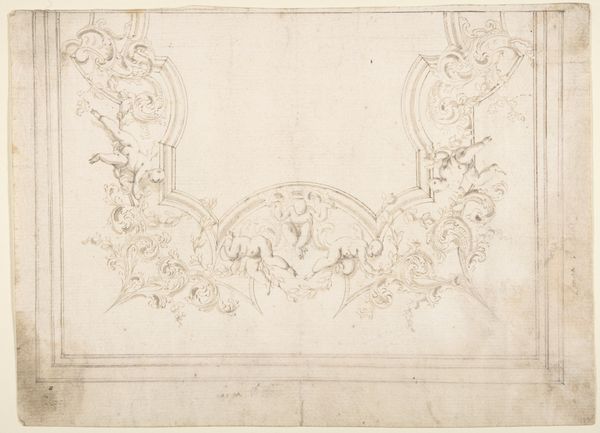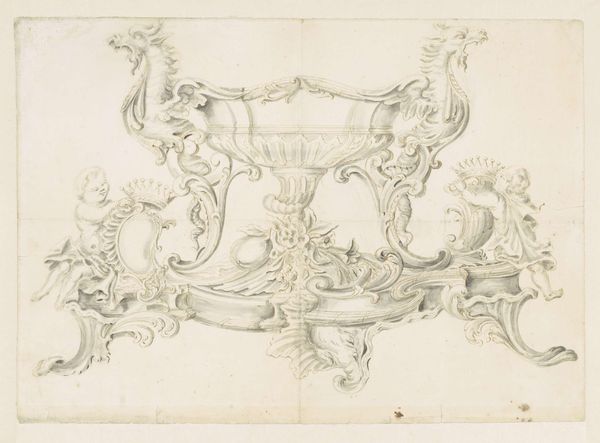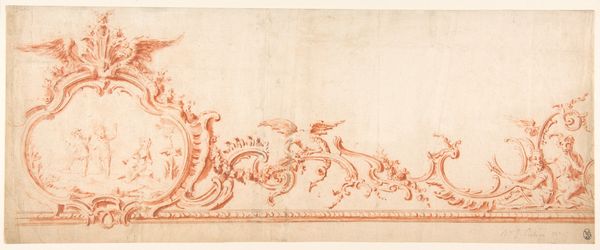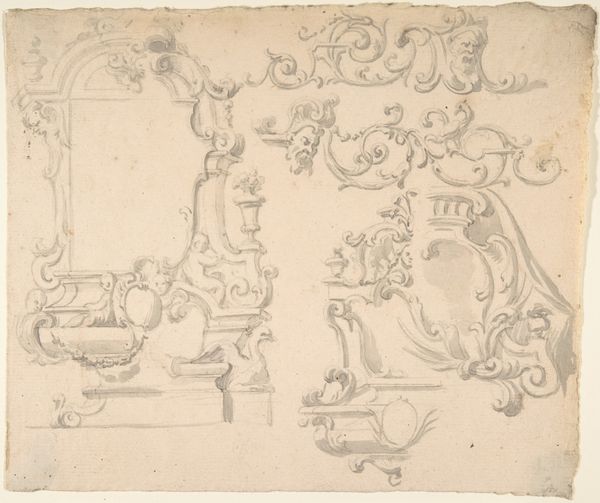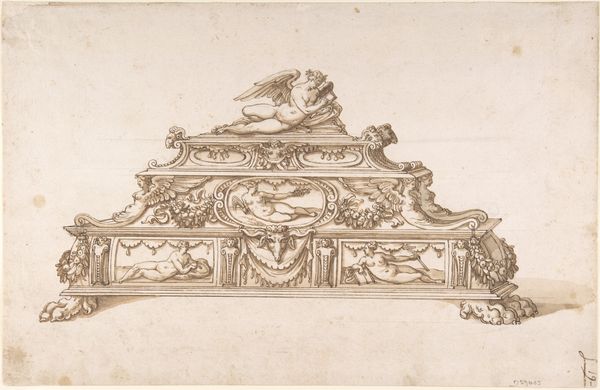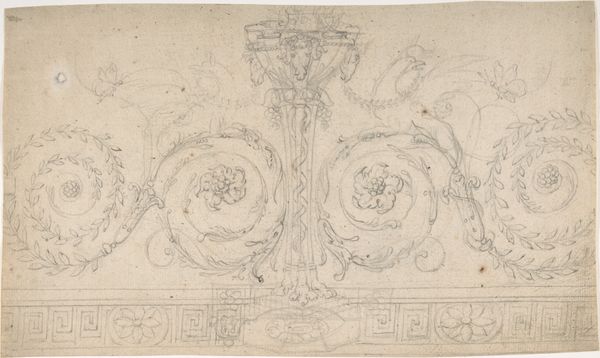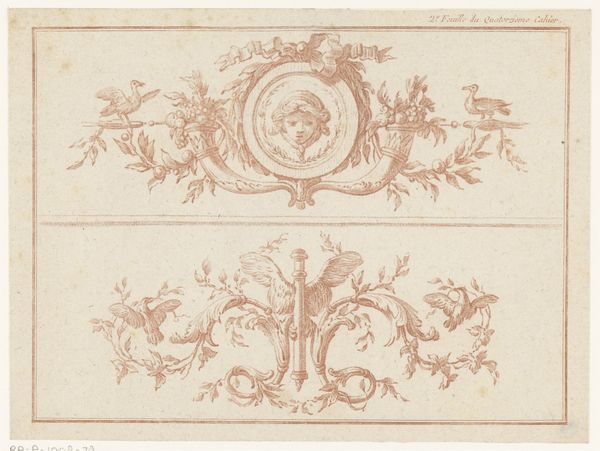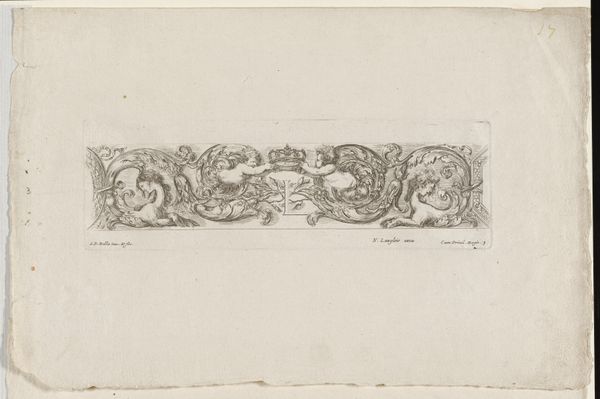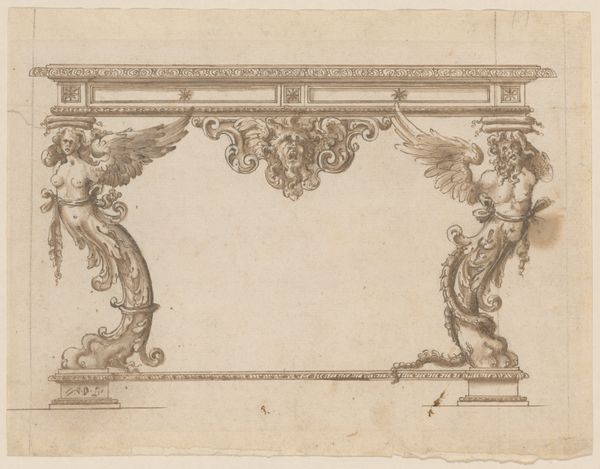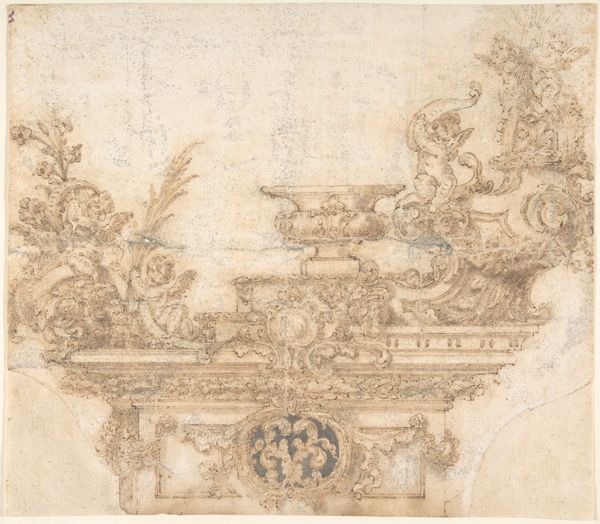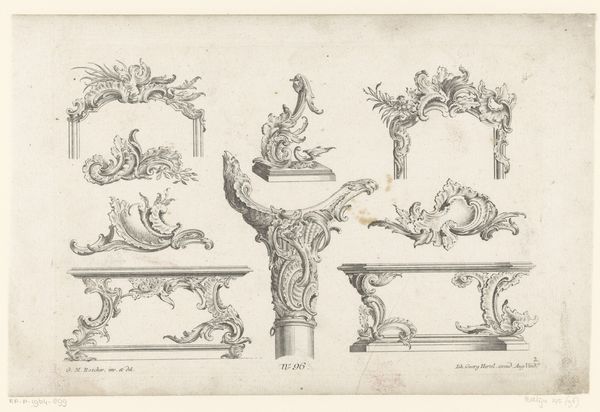
Designs for Two Reliquary Caskets; at top Bishop; at bottom: Skulls and Bones 1700 - 1780
0:00
0:00
drawing, ink
#
drawing
#
ink drawing
#
baroque
#
figuration
#
ink
Dimensions: Overall: 7 1/2 x 10 3/16 in. (19 x 25.9 cm)
Copyright: Public Domain
Curator: So, what catches your eye in this drawing? For me, it's undeniably the elaborate detail and the rather theatrical mood, but tell me your first thoughts. Editor: Well, instantly, I feel a somber grandeur, you know? Like stepping into a shadowy cathedral. The curves, the flowing lines—it's almost like visual music. Curator: I think you’ve nailed it! What we're looking at is titled “Designs for Two Reliquary Caskets; at top Bishop; at bottom: Skulls and Bones”. This intriguing piece hails from the period of 1700-1780 and it’s attributed to an anonymous artist, rendered in ink. Currently, it’s housed here at the Metropolitan Museum. Editor: "Skulls and Bones," though… it brings a memento mori vibe crashing into all that baroque extravagance, right? Like a reminder of the ephemeral nature of even the most lavish lives. Curator: Precisely. In this image we see symbolic power. The contrasting images point towards life and death as states or transitions from corporeal existence to an incorporeal state. In essence, it emphasizes death and life simultaneously within religious meaning, creating cultural value. Editor: The Bishop with wreath, as contrasted with Skulls and Bones motif. That upper casket suggests nobility and spirituality, but the lower one is a straight-up confrontation with mortality, which is more than thought-provoking! Curator: The Baroque aesthetic embraces such theatricality, I agree. And those dramatic flourishes, the bold curves. However, they all serve to remind viewers of the spiritual truths that shape existence through this ephemeral theatre. The images speak on our past and present beliefs, both life and death. Editor: You know, it’s strange to feel drawn to something so overtly about mortality, and, yet… there's something captivating about the honest dance between beauty and decay. What does the iconographic perspective tell us? Curator: Indeed. What moves me, as an iconographer, is how even a drawing meant for such specific religious objects manages to resonate through centuries as something more profound—almost like visual poetry about human existence itself. It serves as a powerful conversation starter even today! Editor: I’m just pondering about those choices made by the original artists. I mean, was there the awareness that future audiences would see it through such lenses centuries from now? Food for thought, really… Thank you for those perspectives.
Comments
No comments
Be the first to comment and join the conversation on the ultimate creative platform.
